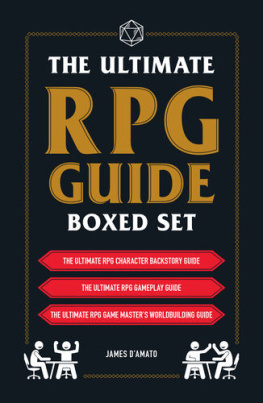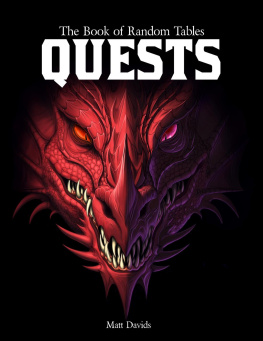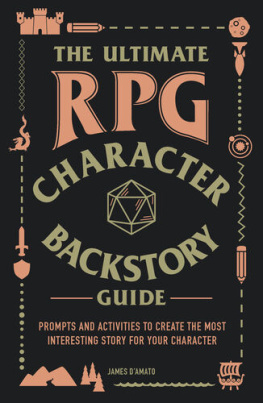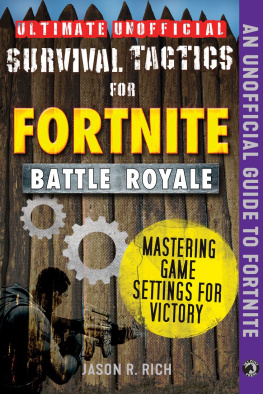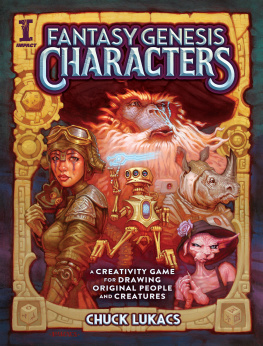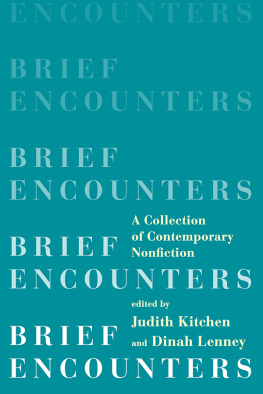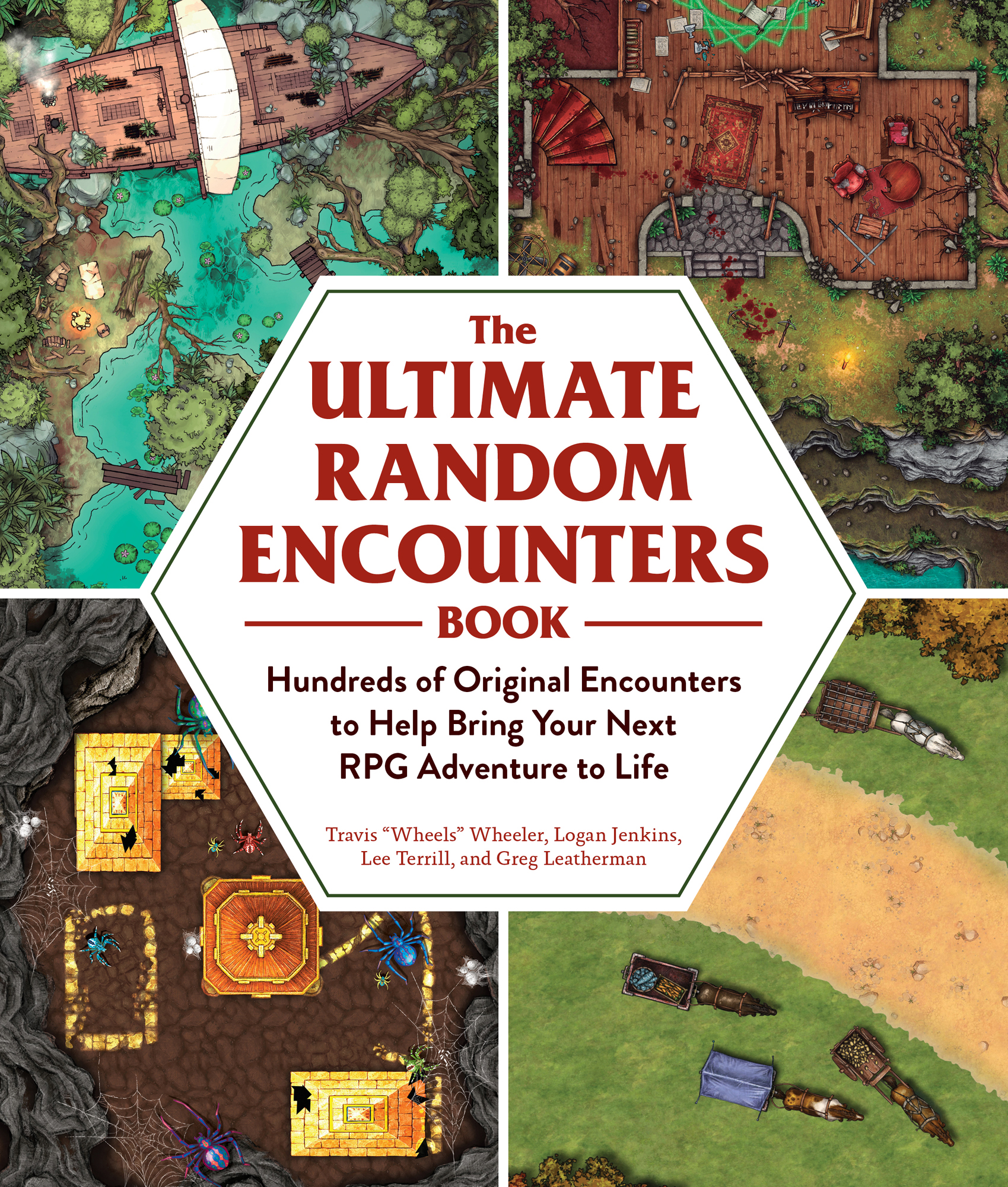Contents
Guide
The Ultimate Random Encounters
Book
Hundreds of Original Encounters to Help Bring Your Next RPG Adventure to Life
Travis Wheels Wheeler, Logan Jenkins, Lee Terrill, and Greg Leatherman
INTRODUCTION
Playing a role-playing game is a delicate dance. If everything runs smoothly, it feels like you and your friends are able to maneuver effortlessly through dramatic, epic, and uproariously silly scenes where everyone gets a chance to shine.
And yet, other times it just doesnt come together. Combat slows to a repetitive grind, the game master runs out of good non-player character (NPC) ideas, or after twenty-six rounds maybe even the most beautifully designed encounter just gets a bit stale.
Sure, you could prep an absolute powerhouse of an all-killer, no-filler role-playing session. Spend time getting fun character voices ready for every NPC. Map out a bunch of separate combat encounters. Intricately weave a tale of beauty and sorrow.
But that sounds like way too much work. Plus, most games put all that responsibility on the GM alone; someone is going to be saddled with a ton of homework just so you can all play every other Tuesday.
This is the book you turn to for help. Its a big book of ideas designed to slot right into your existing campaign, organized into neat little tables.
Got a pre-existing world but youre running dry on things to have the party do in it? Flip to Part 1 and roll up one of our random encounters.
Got the rough sketches of an encounter but not time enough to populate every nook and cranny of the setting? No problem. Prep as much as you can and fill in the rest from the game master tools in Part 2.
If you salivate at chaos magic effect tables and daydream about wild, unexpected die results, you already know it can also be fun to throw caution to the wind and let randomness determine as much as possible. Even the most organized GMs and the tightest adventure modules benefit from a little spice!
BECOME ONE WITH THE DICE
Once you get enough practice with it, using random generation can vastly enhance your game. Even with minimal prep, your table flows with novel ideas, unpredictable stories, and happy narrative accidents.
Getting to that point can take some mindset shifts though. Its just as easy to roll up some random elements, stare in bafflement at what the table gave you, and give up entirely. Thankfully, though, all it takes to get going again is another roll on the table.
Randomly selected elements from tables like the ones in this book are entirely disposable. If you roll up an encounter, read it, and it doesnt sing to you, take a note from Marie Kondo: Throw it out and roll again until you read one that sparks joy.
That goes for individual elements too. Many encounters in this book are written with a lot of flashy elements that you can sculpt down into the perfect session for your group. If the encounter features a werewolf ex-paladin mercenary, maybe you ditch the mercenary detail because you fought mercenaries last week.
Once youve mastered the reroll and the substitution techniques, youll find the random elements from your sessions feel like you planned them on your own. Theyll fit your story like a glove, because youve already got incredible ideas. Randomization provides you the sandbox in which to use them.
HOW DO I USE THIS BOOK?
There are two approaches to using the random tables in this book.
First, the GM can roll some random elements in advance to speed up preparation time. Implement your best ideas, then turn to this book for the small details, like NPC motivations or random encounters, to fill the gaps between points of interest.
Second, you can rely on this book for complete pickup RPG sessions. Maybe youve got half your normal group over. You cant exactly pick up where you left off in the story without the rest of the group. Whip out this book, roll a random encounter, and youve got yourself a session that requires zero prep and that doesnt need to advance your pre-existing plot. The resulting Franken-session of random NPCs, encounters, and settings will probably be a bit odd, but youve already got a handful of creative minds at the table who can help you make sense of what you wind up with.
This book is split into three parts: Part 1 contains nine tables based on game environments from which you can generate random encounters for your characters. Part 2 features tools for game masters looking to tweak game details. Part 3 lists various downtime encounters you can use in any game to flesh out characters personalities and have some fun group banter.
USING PART ONE: ENCOUNTER TABLES
The encounter tables of Part 1 are the biggest chunk of the book, since random encounters save you the most time in prep.
While you might think of a combat opportunity when you hear encounter, an encounter can really be any event that hooks the players into role-play or strategy or both! This books encounters run the gamut from nail-biting brawls to relaxing comedic romps with oddball NPCs.
Simply flip to the section for the environment the party is in, then use any method of picking a random number between 1 and 100. Two d10s work great. You can also just read through a few pages worth of encounters ahead of time and pick one that stands out to you. In each section youll find maps that illustrate some of the encounters. Those encounters that take place in the mapped locations have their numbers circled for easy identification.
The encounter will give you more than enough ideas to get started. If you want, you can add or remove elements of your own to tweak the session to fit what you think your group will enjoy best.
USING PART TWO: GM TOOLS
If the encounters of Part 1 are the meat and potatoes of your next RPG session, the GM tools of Part 2 are the sides and sauces that bring it all together.
You can use these tables to add motivation to existing characters, generate entirely new NPCs, quickly whip together new locations, or even provide wild mid-encounter twists to keep the players on their toes.
USING PART THREE: DOWNTIME
Part 3 contains encounters that are fit for anywhere in your adventure and not tied to a specific location.
But enough talk. Lets get down to it!
PART ONE ENCOUNTERS
The encounter prompts in this book are grouped into tables by setting, with one hundred encounters per table.
If youre trying to insert these encounters into a pre-existing campaign, good news: Just pick the table whose setting fits the story youre in the middle of, and play encounters from there until you want a change of scenery. If youre starting from scratch, good news: You get your pick of the litter. Each table begins with an introductory section that explains what kind of adventures you can expect from the setting. Choose whichever one sounds best to your group.
From there you can either select the encounters that stick out to you or choose a number between 1 and 100 to let chance decide.
CITY
Welcome to the city! Just like metropolitan areas in real life, fictional cities are the places where a communitys hidden contradictions start to show. Poor areas ravaged by crime syndicates rest within spitting distance of rich socialites frittering away wealth. Royals and rebels vie for turf. Mass disasters roll in alongside tiny, personal disputes.


